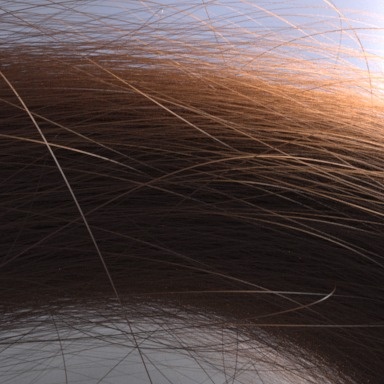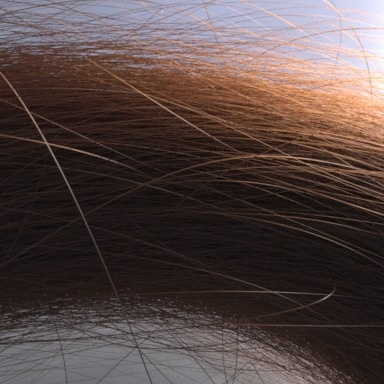...
Opacity
Like all geometry in RenderMan, if the BxDF attached to a curves primitive computes presence or opacity, this will control whether the curves are present on screen and to what percent. To improve raytracing performance, presence and opacity signals are always cached for curves. There is also an optimization implemented for round curves where if the opacity is specified in the "Os" primitive variable, then a more efficient code path is taken when computing shadowing which avoids the need to run any BxDFs or lookup into the opacity cache.
Minimum Width
An option can be used to specify the minimum width for curves. When specified, this artificially widens curves so that they are at least as wide as the specified minimum width (measured in pixels), with a corresponding decrease in presence. The effect is that the curve looks about the same when rendered, except that the high spatial frequency geometry is now band-limited thus minimizing aliasing artifacts, which just means that fewer camera samples are needed in order to anti-alias the curve (and thus fewer rays need to be traced, resulting in faster performance). Useful values for minimum hair width range from 0.0 to 1.0.
Option "haircurve" "float minwidth" [0] (default: 0)
haircurve:minwidth = 1.0 with 64 samples per pixel haircurve:minwidth = 0.2 with 64 samples per pixel
Notice in the example images above that the render with haircurve:minwidth=1.0 has converged after 2.5 minutes using only 64 samples-per-pixel, whereas visual inspection reveals that the render with haircurve:minwidth=0.2 (also rendered using 64 samples-per-pixel) still has some areas with not-fully-converged aliasing artifacts after the same 2.5 minutes of rendering (which do ultimately resolve with more samples). Minwidth is not a physical-based control, you may notice the haircurve:minwidth=1.0 setting has introduced a perceptible amount of bias in the render (that is, it is slightly smoother in a few areas), although the introduced bias is not visually objectionable, in some cases it considered desirable as it produces a softer look.
Best Practices
When rendering hair or fur, it is recommended that:
- Round curves should typically be enabled when appropriate. Doing so will ensure high quality hair shadowing in any lighting configuration by intersecting against cylindrical hair geometry instead of flat ribbons, resulting in significantly more realistic occlusion.
- Many hair or fur strands should be packed into relatively few Curves primitives (e.g., 10,000 or more strands per Curves primitive), rather than rendering millions of Curves primitives that each are composed of just one or a few strands of hair.
- If a model is composed of several curves objects that substantially overlap in volume (e.g. fur coat and undercoat), the best performance is achieved when these objects shares the same values for transformation, visibility flags and group membership.


